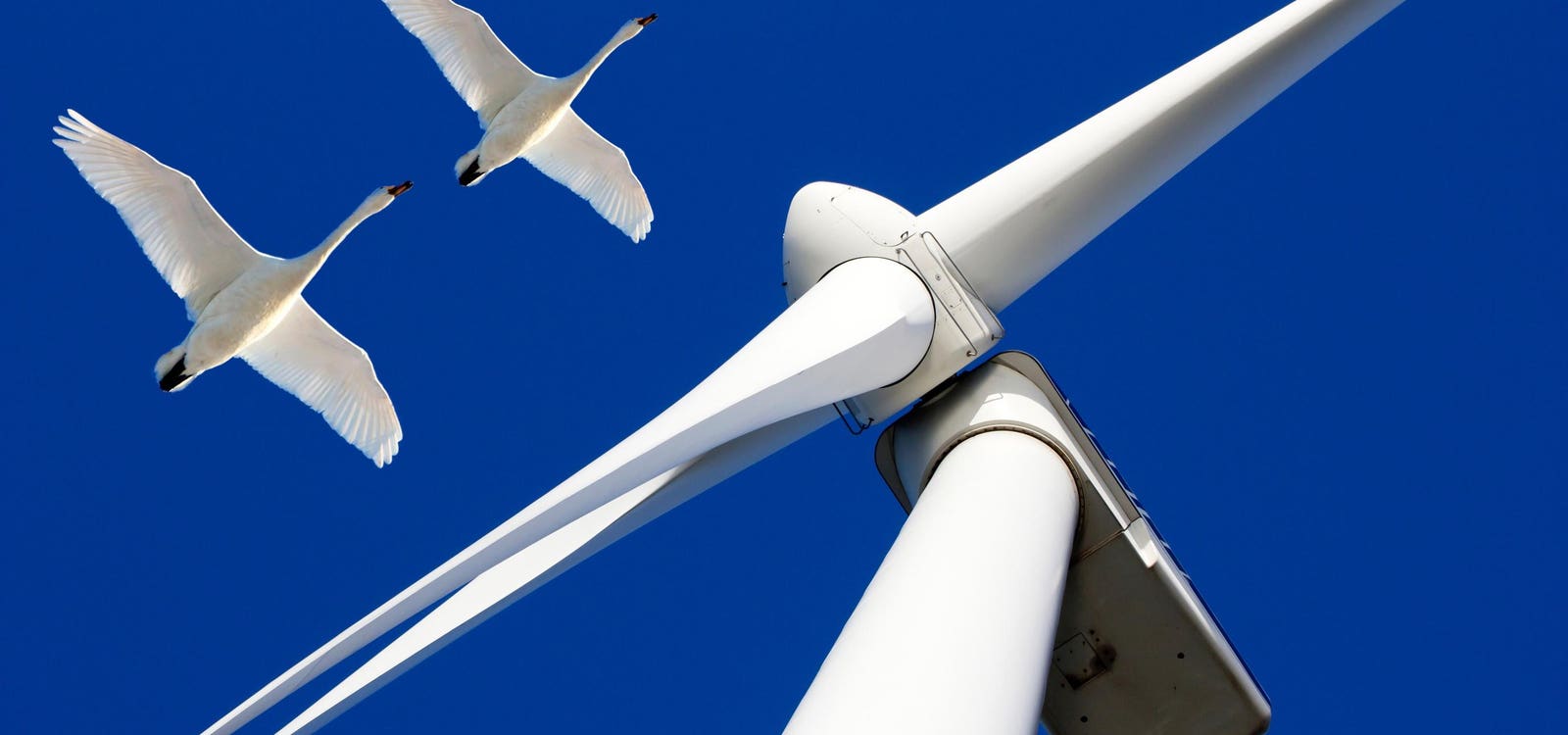
Science Offers A New Way To Save Birds From The Jaws Of Wind Turbines
Many migratory birds die each year flying into the blades of our wind farms. Weather radar data is … [+] showing us how we can be nicer to our sky-fairing friends.
getty
Norway is sacred ground for nature lovers. It’s home to 60,000 of the world’s species, including 450 species of birds—250 of which nest within the varied ecosystems of the country. It’s geographical position in the northern part of Europe allows the country to experience significant bird migration events, with numerous species passing through or arriving to breed during the spring and summer months, and then departing for wintering grounds in autumn.
Norwegian bird researchers are about to employ new approach to studying these annual bird migration patterns, through the use of weather radar data, which may help to protect our sky-fairing friends on their long-distance journeys.
We’ve come a long way from discovering migration in 1822, when a white stork shot down in Germany was found with an African spear through its neck—evidence that it had migrated from far south of Europe.
Today we have GPS tracking abilities and we have better imaging and listening devices. We also have the old-school way of doing it, which is by physically tagging the birds to discern were they flew from.
Despite this data being available, we are unable to accurately predict the migratory path of many birds, leading to their instant deaths between the blades of wind turbines.
However, the scientific community may be onto the most prudent solution to the problem of studying migration patterns—relying on weather radar stations.
What Do Weather Radar Stations Have To Do With Birds?
A technician works on a weather radar at a workshop. While these are primarily used for … [+] meteorological purposes, they do detect and differentiate between atmospheric activity and biological activity—which means they can tell us a lot about the migration of birds.
VCG via Getty Images
Weather radar is a sophisticated piece of technology that has traditionally been the eyes in the sky for meteorologists, helping to predict everything from light rain showers to severe storms. At the heart of a weather radar system is a powerful turbine that emits pulses of radio waves into the atmosphere. When these waves encounter objects, such as raindrops, snowflakes or even birds, they bounce back to the radar station, providing real-time information on what’s happening in the sky.
A radar, designed to keep an eye on the weather, distinguishes between a cloud bursting with rain and a flock of birds because birds reflect radio waves differently. By analyzing the characteristics of the returned signal, such as its intensity, movement and the pattern of any fluctuations, scientists can tell whether they’re observing a weather event or biological entities like birds.
Moreover, when birds fly through the radar’s detection area, they create a distinctive signature. Unlike the more static, slowly changing patterns associated with weather events, birds move in more dynamic, fluctuating patterns. Advanced algorithms and analysis techniques allow scientists to filter out these biological signatures from the weather data, effectively turning a tool meant for meteorology into a novel system for tracking bird migrations.
According to Øyvind Nyheim, a Ph.D. student at the Norwegian Institute for Nature Research (NINA), around 80% of migration takes place at night—in conditions where weather radars may be ideal.
Also, at the altitude at which these birds fly, the tracking system employed for studying migrations must not only detect data from a large area, but must also be reliable, providing data continuously. Nyheim believes this is what makes it one of the most important ornithological tools available, even if it wasn’t designed to be.
Are We Going To Leverage This Data?
Data from weather radars can be made available online, making it so that anyone who’s interested can get in and track their favorite species. But it can also specifically be made available to governments, organizations and individuals setting up wind farms across the world. This way, wind farms can be developed and run so that they don’t hinder the free movement of birds.
If we can leverage this data and take a proactive approach of turning off the turbines when birds fly by, we may very well see real-world benefits to this. A 2012 study published in Biological Conservation found that selectively stopping turbines with the highest mortality rates, especially when vultures were observed nearby, reduced avian fatalities by 50%.
This fusion of meteorology and ornithology, facilitated by weather radar, is about to flood us with detailed insights into how birds migrate. This effort not only highlights an innovative spirit, but also the importance of cross-disciplinary approaches in studying nature and ensuring that our needs do not stifle their rights.


